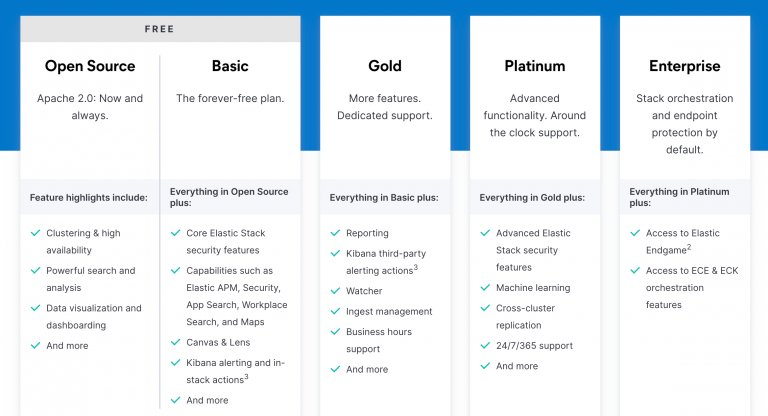what is it and how is it different from customer centricity
When mass production appeared in the West in the 20th century, companies assumed that customers could want anything, but the company produced what it was good at and considered useful. There was a dictate of the product, product-centricity. Let's recall Henry Ford's statement that a car can be any color, provided it is black. Demand for such goods was high, and everything that was produced was bought up. The economy grew on this. The choice of goods expanded, but most of them were aimed at an extremely wide audience.
Consumer standards gradually increased, markets differentiated, new niches emerged. And in the 1960s, the West began a gradual transition to customer centricity. The point is this: you can’t make products the same, because you have a segmented audience — different categories of customers.
Many modern experts believe that the transition to human-centricity is the next stage of development after product- and client-centricity. If we interpret this approach not only as comfortable conditions for employees, but as the person himself as a support and driving force for the development of the company and for organizing its relations with the outside world, then such a goal now exists only at the level of ideology.
Man in the digital economy
An important aspect in understanding the phenomenon of human-centricity in the economy is to consider the place of a person from the point of view of companies, project owners, and others. The positioning of a person in the digital economy is one of the central factors, taking into account which companies turn to human-centricity, so it cannot be considered in isolation from the phenomenon.
Every year, the relationship between man and technology becomes more complex and uncertain. From a tool for solving routine problems, technology is turning into something more: into the context of changes taking place in the world, society, and man.
Some experts believe that society is currently at a point of bifurcation – humanity is rapidly changing as a biological species and as a civilization. And technology plays an important role in this process: on the one hand, people use it to solve problems faster, more efficiently, better, on the other hand, it becomes a threat and an obstacle to habits, relationships, work processes, and business.
Another important thing is that technologies are anthropocentric. They reflect the problems that a person or society faces, and sometimes this mirror turns out to be extremely crooked. For example, a person strives to better understand the processes that describe his behavior, but comes to the conclusion that algorithms built on understanding these processes change his behavior. A good example of this effect is “fake news” and information bubbles in social networks.
Some experts believe that technology is the path to progress and a healthier, safer, and more educated future. Others believe that technology, on the contrary, is setting us back in the only important variable: the ability to make ethically balanced decisions. But everyone agrees that humans influence technology and are at the same time dependent on it.
Both customers and employees choose companies that demonstrate corporate social responsibility: companies that put people before profits, job seekers say.
When talking about brand adaptability, today they usually only mention changes in visual identity: complex design elements are gone, the style becomes more laconic. Such changes are entirely justified, because the brand should be recognized in various communication channels from social networks to billboards. But today, beautiful pictures are not enough: the values, goals and mission of the company come to the fore.
Traditionally, marketers have studied the customer experience (Customer Experience) and then used the data to increase sales and accelerate business growth. They count the number of calls, the number of minutes customers spend on the site, and measure and calculate every action. These metrics are still useful, they are the foundation without which it is impossible to build a relationship with the consumer. But today, companies believe that relying solely on statistics means losing their customers in the future.
Bright packaging without content irritates consumers more and more every day. And in an attempt to solve this problem, many brands, among other things, turn to a human-centric approach or human experience, as it is commonly called in marketing.
If a company takes human experience into account when building a brand, it expects to receive significant dividends in the future. When an organization tries to truly understand the consumer's aspirations and helps them solve various life problems by releasing useful products, then it will always be in demand. And no, we are not talking about charity. Oddly enough, it is profitable for businesses today to empathize with customers, find a balance between profit and social responsibility.
Human-centricity
Speaking about human-centricity, I don’t want the meaning of this word to become a meaningless mantra, as happened, for example, with customer focus. But it is precisely for state and social projects that human-centricity is now the most important aspect.
It is based on the idea that people are much more than just statistics or the result of a socio-demographic study, that behind all the numbers there is a real person who is tired of endless calls to “subscribe”, “turn on”, “register”, but every day begins to appreciate the manifestation of empathy and care.
Human-centricity starts with the people involved, their goals, their needs, and what makes them happy and unhappy. It is an approach to problem solving that seeks to deeply empathize with people in order to create effective ways to achieve their goals. It shifts the focus from problems to people to ensure that the root of the problem is understood. It is a bit like a good doctor who makes sure that they understand the cause of a disease so that they can cure it, not just make the symptoms go away. To cure, not just manage the symptoms, doctors need to look holistically at their patient’s body, health, diet, and lifestyle. Human-centricity is also a holistic approach.
Customer experience design always focuses on the organization's needs for customer experience management and specifically on those who are customers and potential customers. Depending on their demographics, this may be a broad or specific group of people.
The first key principle of human-centricity is focusing on people.
Whether it’s a digital product like an app or a new system for placing products on shelves, it’s important to consider all the people involved: both those who have to place the products on the shelves and the customers. This is an important part of understanding the relationship between systems and products and how to make the experience, product or system better. By considering all the people involved in the product or system in question, you can understand the real reason why something isn’t working for everyone.
In digital terms, this means thinking about the customers using an app to buy groceries online, as well as the staff on the other side of the app who must use the information to efficiently submit orders. By keeping an open mind, learning, empathizing, and understanding how all of these people are connected, it becomes possible to design the customer experience holistically, which brings us to the second principle: don’t just solve a problem, solve the right problem.
The right problem needs to be found.
You don’t have to be a doctor who just treats symptoms. You can find the root cause of a problem by doing research into the problem space before taking further action and learning about the people and systems involved in the problem. If, for example, you take the example of an online store order being delayed, it’s easy to assume that the problem was with the delivery staff, but with proper assessment and an open mind, you may discover that the online site is not accepting the address correctly for the country it’s shipping to and that this will negatively impact the delivery process.
Human-centricity is about having an idea or hypothesis for process improvement and then testing it. Having assumptions is still a natural and integral part, as it can be used as a starting point for identifying a potential problem.
Keep the big picture in mind
A common way to refer to the big picture is also the “North Star.” In old navigation, the “North Star” was crucial, just as having a unified goal is important for a CX design team or project. It keeps everyone aligned and moving in the same direction. This is also called the “why” of the business, or the core reason for the company’s existence. Surprisingly, this core reason is not always just about making a profit. The “why” of a business is sometimes about providing an experience, helping people achieve a specific goal, making life easier or better in some way, and many other personal motivations.
Don Norman, considered the founding father of user experience design, uses the example of a camera. He reminds us that a camera is a very complex device that does not have a simplified user experience, and that is okay. This is because the end goal is not to provide the user with the simplest experience. The end goal is to capture a moment in time through video or photography. Taking a clear photo or creating a great video is the “North Star” of camera design, so the experience of using the camera interface is not the key when designing for this purpose. The goal will still be to provide a tool that can beautifully capture life.
Human-centricity and customer focus
The most important question that worries almost everyone who learns about human-centricity is how this story differs from client-centricity and why is one better than the other?
Ernest Hemingway said, “Never confuse motion with action.” In today’s human-centric industries, there is a lot of motion. New products, new solutions, new campaigns, new packaging. It seems like every day something new is being introduced to the market and sold to consumers. However, this does not always lead to action: a real solution to a problem or a need being met.
The vast majority of these initiatives are just a movement, not a meaningful human-centered action. Many companies talk about human-centeredness, but only scratch the surface of the concept.
In its broadest sense, a consumer can be defined as someone who buys goods or services for personal use. This is the meaning of the word “person” that we see in terms such as “fast moving consumer goods,” “consumer packaged goods,” “B2C,” or “D2C.” This use of the word “consumer” is intended to separate the personal from the commercial.
We can say about literal definitions: client – is the one who makes the purchasing decision, and consumer — is the one who actually uses it. In some scenarios, a person can be both. They can decide to buy the product and be the one who uses it. But in other scenarios, they can be separate people. For example, if the decision to buy is made by a parent, but the product is used by their child or family.
When we introduce the term “client,” a key distinction is made: the element of choice. The client has chosen you, and that ultimately matters to the success of your business. That’s why there are two terms:
Customer centricity — is a model for building a business with a perfectly structured process, based on meeting the basic needs of clients.
Human-centricity — is a business model based on the implementation of emotions and feelings of clients, where the process is important, but the perception of a person is a priority.
According to the concept and from a business benefit perspective, by adopting a human-centric approach, products can resonate more deeply with the audience, ultimately driving engagement and growth. That is, the approach is aimed at building a deeper connection with customer needs and a global elaboration of their true needs and desires, which in the long run will lead to increased sales.




